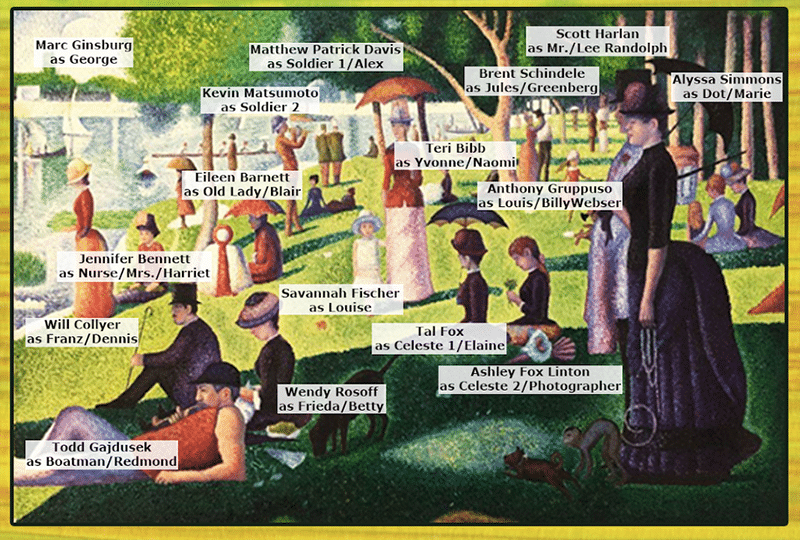“Sunday in the Park with George” is not just a musical; it is a sublime tapestry of art, love, and existential contemplation, artfully woven by the genius Stephen Sondheim. This iconic production, which first graced the stage in the 1980s, serves as a quintessential embodiment of how musical theatre can delve deep into the intricate labyrinth of the artistic process while exploring the nature of creativity itself. In this overview, we will embark on a journey to uncover the thematic profundities, character dynamics, and the enduring legacy of this remarkable work.
The Genesis of the Musical
Inspired by the painting “A Sunday Afternoon on the Island of La Grande Jatte” by Georges Seurat, the musical chronicles the life of a fictionalized version of the artist, George, and his musings on art and relationships. Conceptualized in a partnership with James Lapine, the narrative oscillates between the late 19th century and the contemporary 1980s, illuminating the timeless challenges faced by creatives. Sondheim’s intricate score interweaves various musical motifs, each reflecting the characters’ emotional landscapes, while Lapine’s direction brilliantly juxtaposes the painstaking process of artistic creation against the vibrant tableau of life’s fleeting moments.
A Deep Dive into the Characters
At the heart of the narrative is George, a pensive painter grappling with his artistic vision and the deeply consequential choices he must make in his personal life. This struggle for authenticity and purpose is poignantly reflected in his relationship with Dot, a lively and passionate woman who serves as both his muse and a symbol of the sacrifices creatives often endure. As the story traverses time, the evolution of their relationship acts as a microcosm of the broader artistic dilemmas faced throughout the ages.
Dot’s character is particularly riveting, encapsulating the duality of inspiration and sacrifice. Her yearning for emotional connection is palpable as she oscillates between supporting George’s artistic endeavors and seeking fulfillment in her own life. Their intense dialogues and intertwining duets, such as “Move On,” underscore the complexity of their bond—a balance between creative ambition and love’s imperatives.
As the narrative unfolds, the introduction of secondary characters further enriches the texture of the musical. The ensemble embodies various archetypes—each mirroring the societal attitudes towards art and passion. From the genteel critiques of the art world to the uninhibited revelry of life, these figures paint a broader canvas that reflects the tangled web of human connections.
Thematic Explorations
“Sunday in the Park with George” is a profound meditation on several salient themes. Primarily, it interrogates the struggle between art and life, emphasizing the paradox inherent in the creative process. George’s obsession with his art leads to moments of stark solitude—a silent acknowledgment that such pursuits often demand personal sacrifice. Sondheim poignantly articulates this tension through the musical’s lyrics, creating a rhapsodic narrative framework that probes the nuances of existence and artistic expression.
The motif of observation is woven throughout, as characters frequently reflect on their perspectives, both as individuals and as part of a collective. This theme crystallizes in the song “Color and Light,” where the act of observing art parallels the experience of life itself, illuminating the ways in which perception shapes reality. Here, the narrative transcends the temporal boundaries of its setting, inviting audiences to consider their own interpretations of art.
Musical Composition and Innovation
Sondheim’s score is a spectacular orchestration of melodic invention and complex harmonies. Each song serves as a narrative device, echoing the character’s emotional states and propelling the plot forward. The innovative use of motifs—where specific musical phrases reappear throughout the production—crafts a cohesive sonic identity that enhances the storytelling experience. The interlude pieces also incorporate elements of impressionism, mirroring Seurat’s painting style and allowing the audience to feel the rhythm of both time and emotion.
Moreover, the arrangement showcases Sondheim’s mastery of dynamics, shifting seamlessly from introspective ballads to exuberant ensemble pieces. This musical variety not only captivates audiences but also deepens the emotional engagement, reflecting the myriad dimensions of human experience.
Legacy and Cultural Impact
Since its debut, “Sunday in the Park with George” has carved out a significant niche within the pantheon of musical theatre. Its innovative structure and thematic depth have inspired countless productions across the globe. The work resonates profoundly with artists and audiences alike, establishing a connection that transcends both time and medium—an homage to the intrinsic relationship between creation and existence.
In the landscape of contemporary theatre, its impact can be seen in the works of emerging playwrights and composers who grapple with similar themes of artistic identity. The conversations ignited by the musical continue to reverberate, reminding us of the intricate dance between reality and the ethereal landscapes we carve through our creative expressions.
A Closing Reflection
“Sunday in the Park with George” stands as a testament to the power of theatre. It requests the audience to ponder the essence of creation, love, and the passage of time. As we navigate through contemporary society, the musical offers poignant reminders of the beauty and burden of artistic pursuit, making it an eternal treasure in the canon of musical theatre. Engaging with this work is not simply an act of entertainment; it is an invitation to explore our own narratives, question our definitions of success, and ultimately celebrate the vibrant act of living as art.

